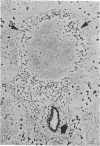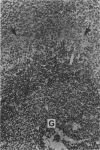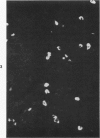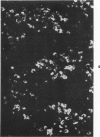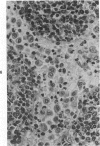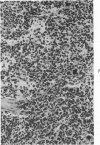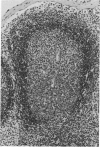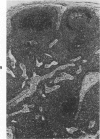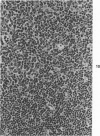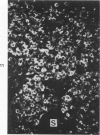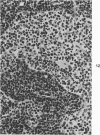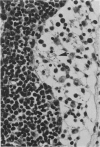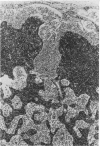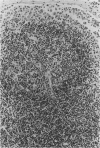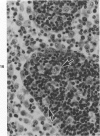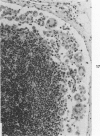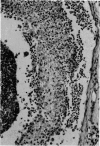Abstract
Marked changes were found in the spleen and lymph nodes of dogs experimentally infected with Trypanosoma brucei. These changes were considered to occur in two phases. First, in animals examined on Days 8 and 16 after inoculation, there was an intense proliferative response; this involved particularly the B-dependent follicular areas and was accompanied by a dramatic increase in the number of plasma cells in the splenic red pulp and medullary cords of the lymph nodes. Although numerous large proliferating lymphoblasts were found in the periarteriolar regions of the spleen and in the peripheral part of the paracortical areas of the lymph nodes, the presence of cells containing Ig in these regions made it difficult to evaluate the degree of involvement of thymus-derived cells. The plasma cell response involved both IgM and IgG, although the increase in IgM-containing cells was most striking. During this initial phase there was focal hemorrhage, deposition of fibrin, necrosis, and infiltration of polymorphonuclear leukocytes in the spleen, these changes being most severe in the peripheral follicular areas. Following the initial proliferative phase and prior to the death of the host during the fourth week of the infection, the spleen and lymph nodes became less reactive, and there was marked disorganization and disruption of their architecture. Compared with characteristics earlier in the infection there was greatly decreased proliferative activity and a reduction in size of the splenic white pulp and lymph node cortices. Germinal centers were reduced in number, size, and activity, had a disorganized appearance, and, by immunofluorescence, showed a reduction of immunoglobulin on the dendritic reticular cells. The lymph node sinuses exhibited a decrease in content of lymphocytes and contained massive numbers of macrophages, including numerous multinucleated giant cells. There was also severe disruption of the reticulum cell network of the sinuses; and accumulations of polymorphonuclear leukocytes, along with extensive deposition of fibrin, were commonly found in the subcapsular sinuses. During this period, foci of erythropoietic cells were present throughout the red pulp of the spleen.
Full text
PDF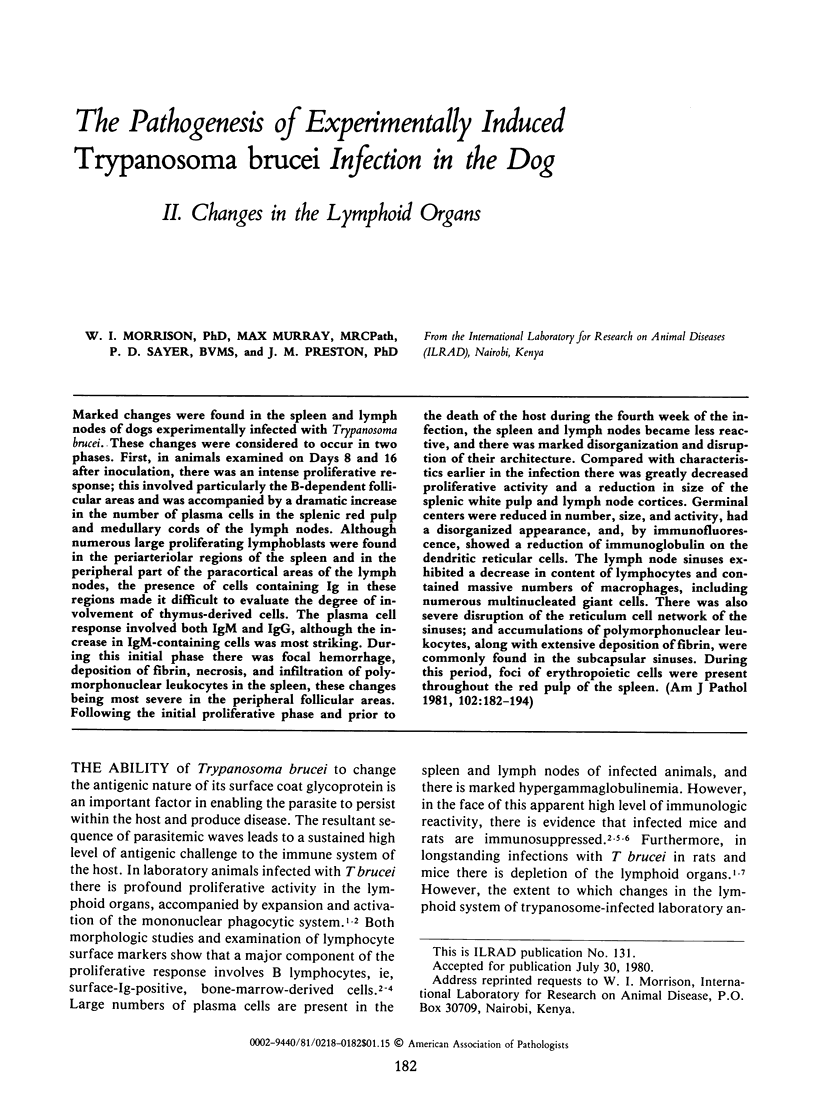
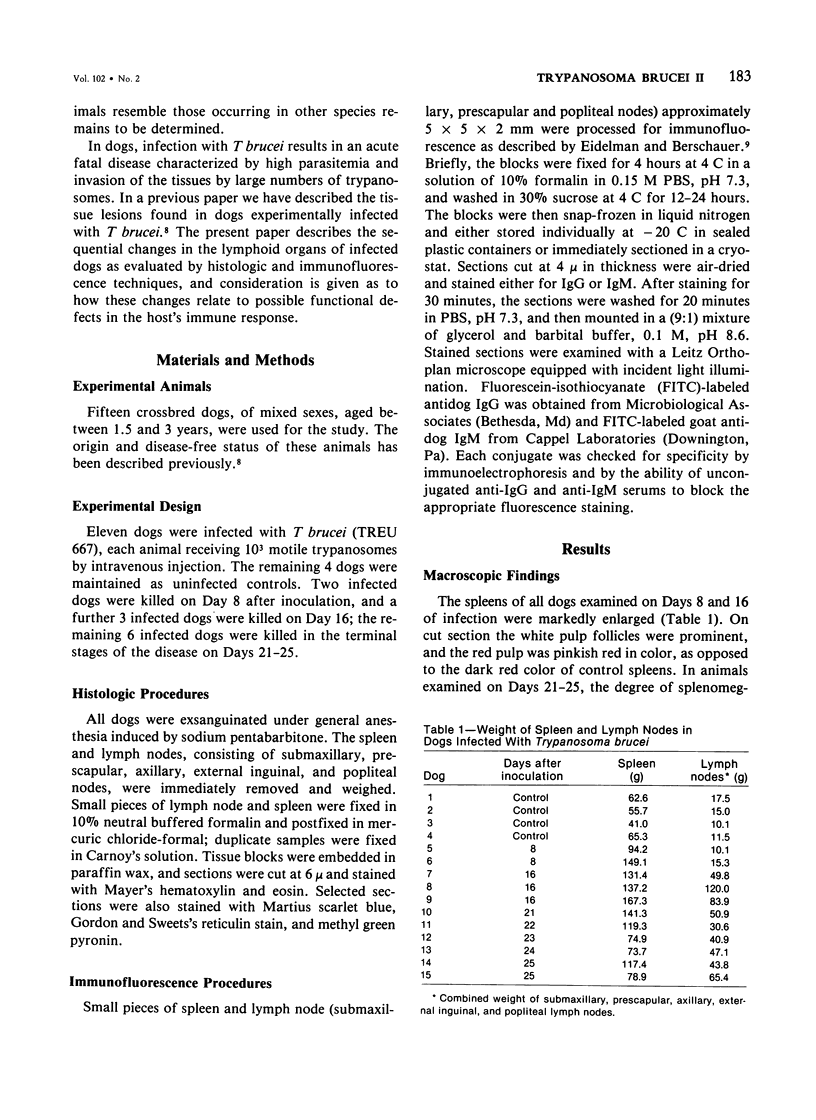
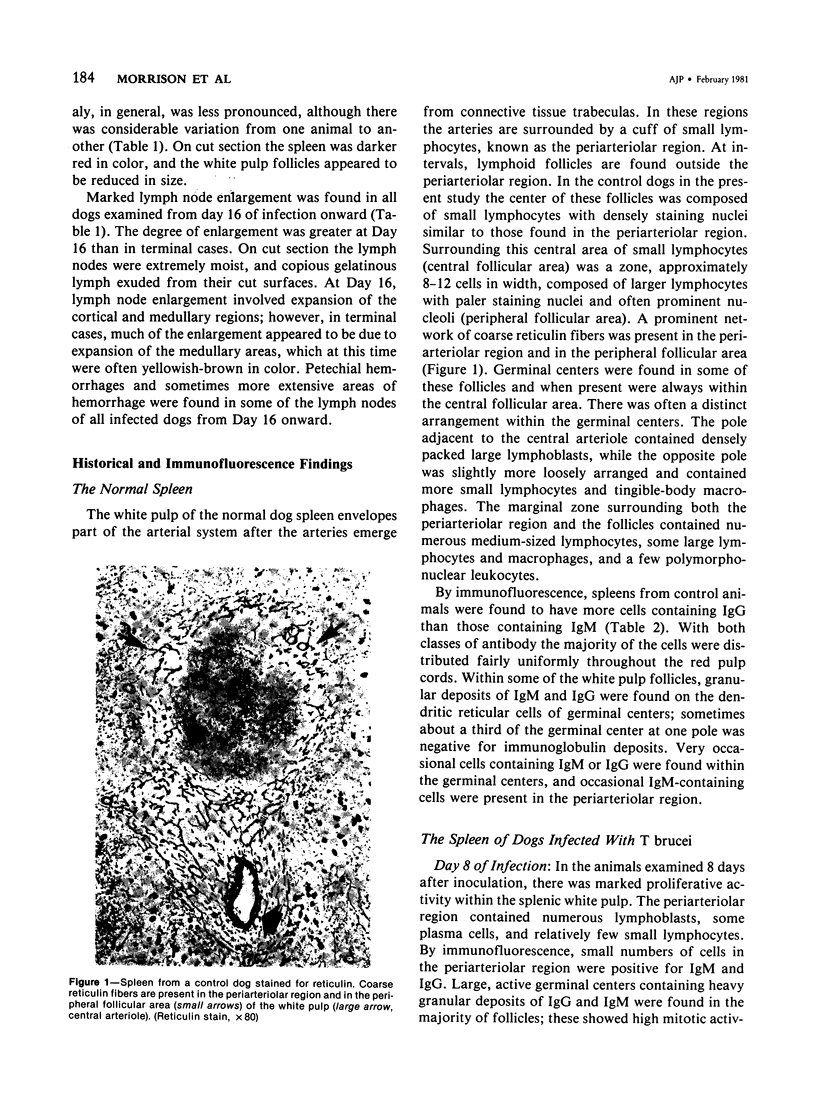

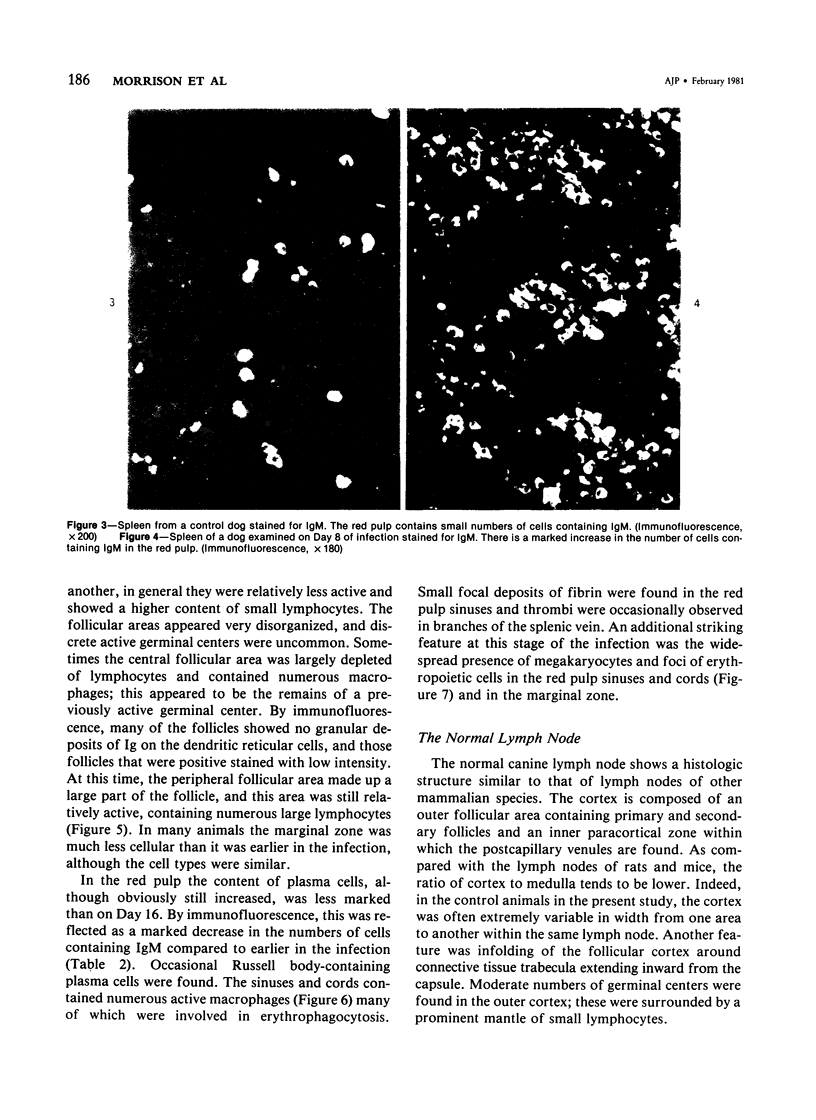
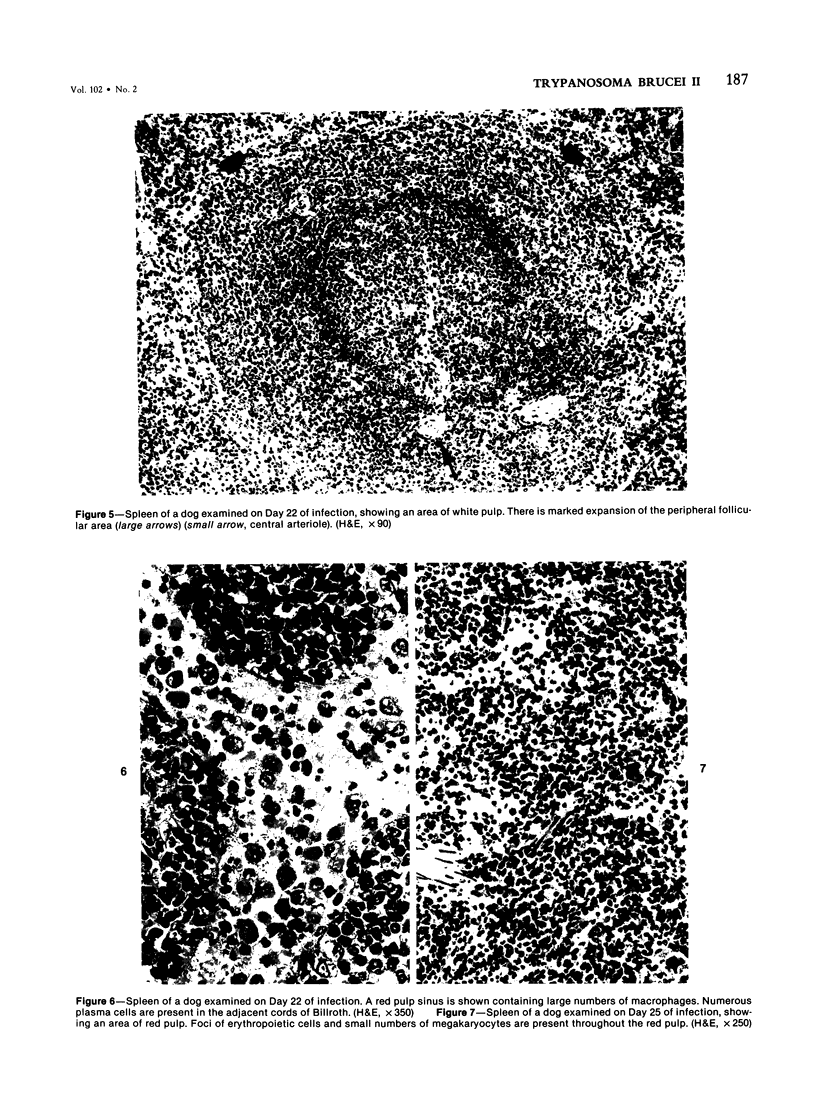
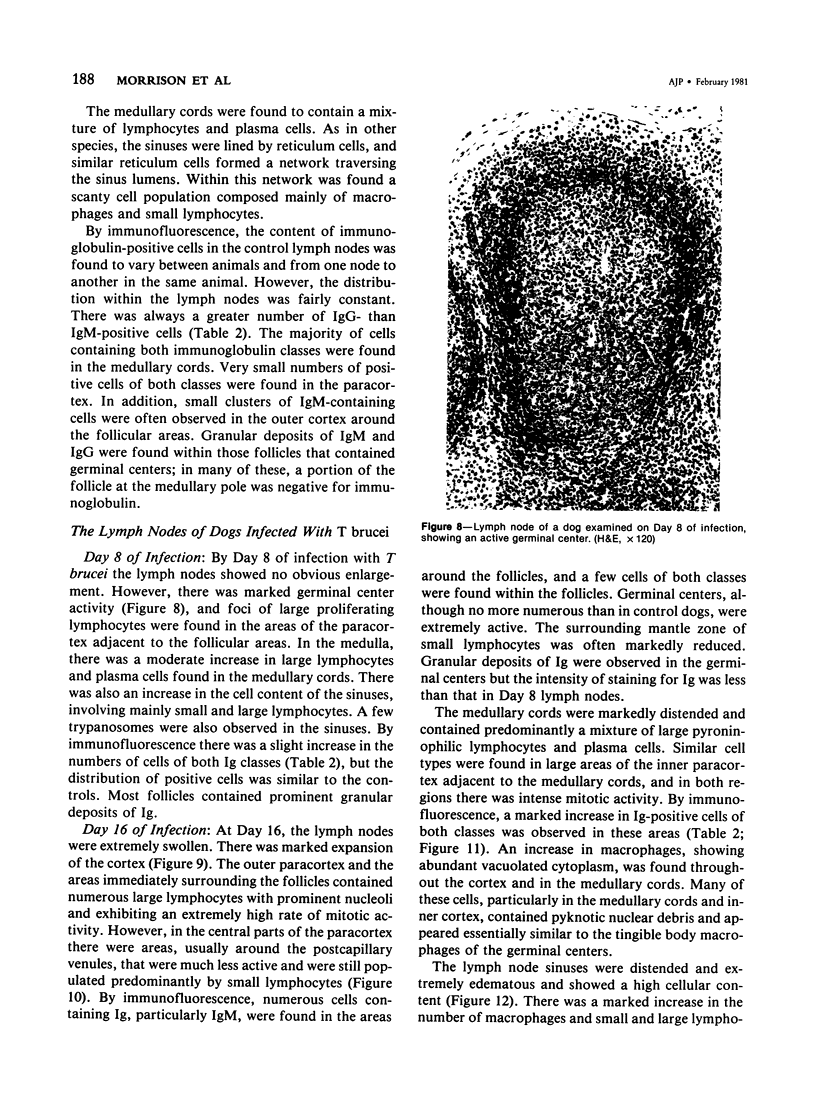
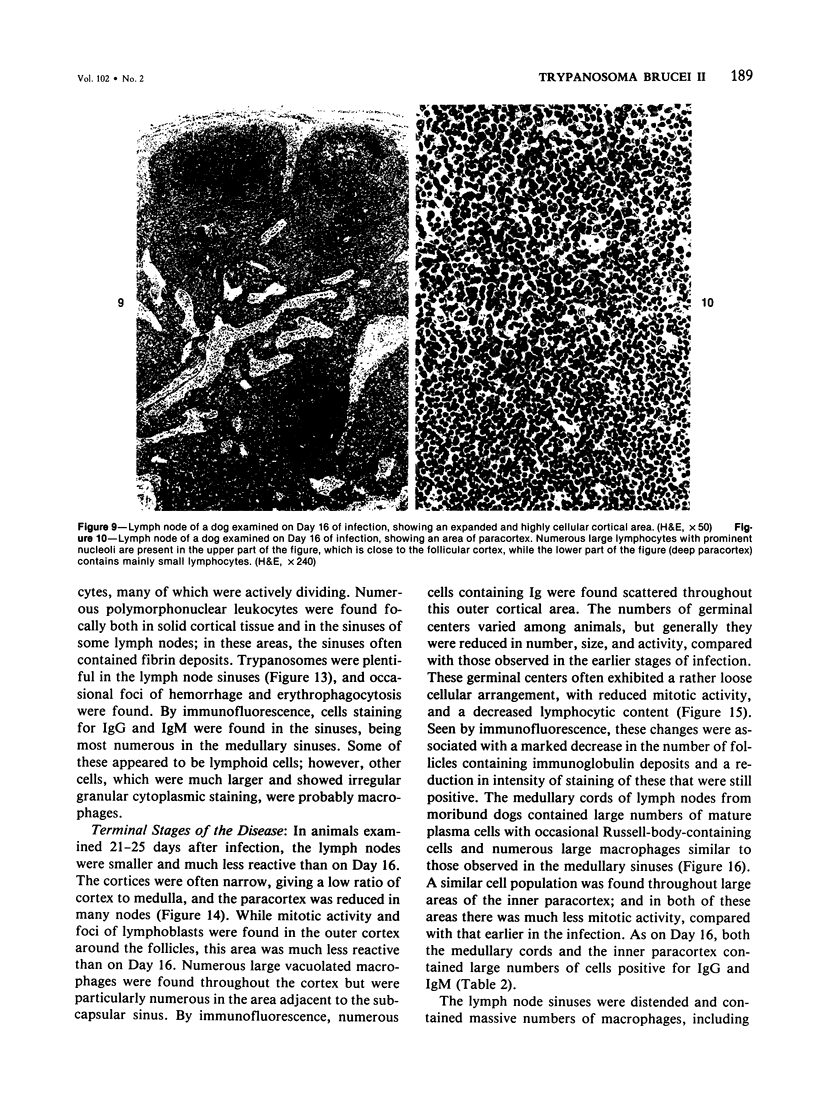
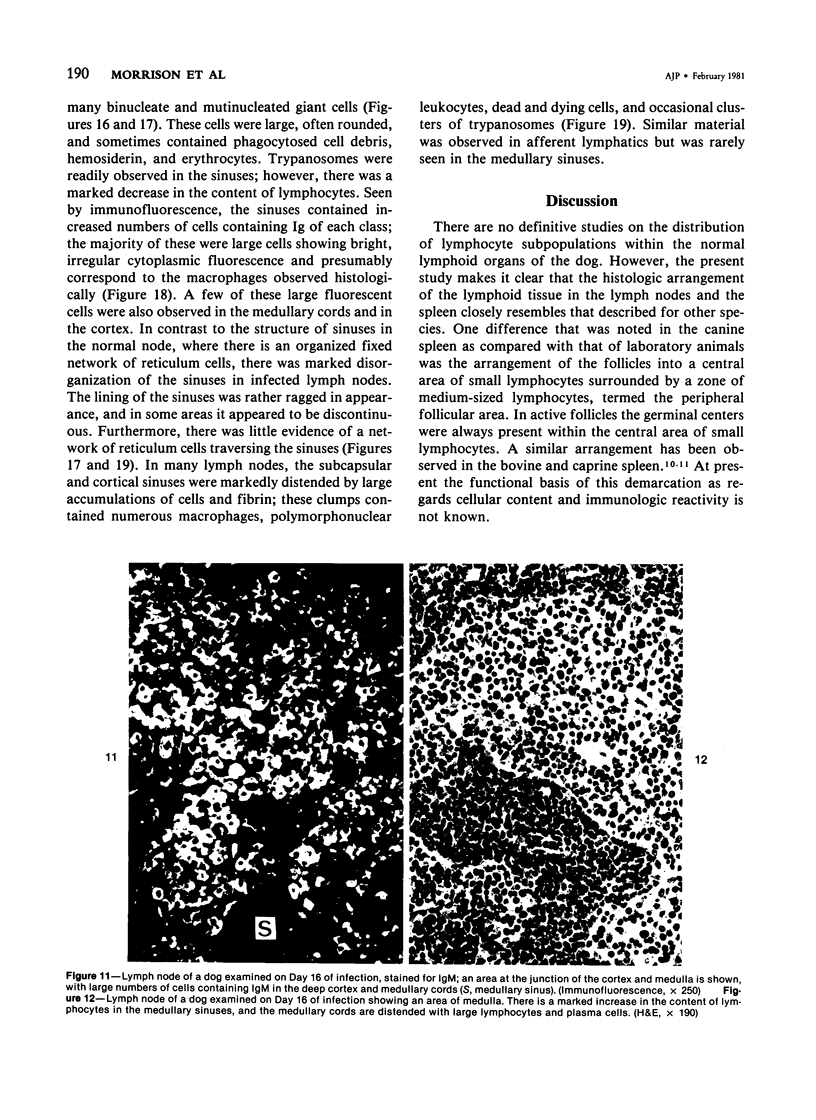
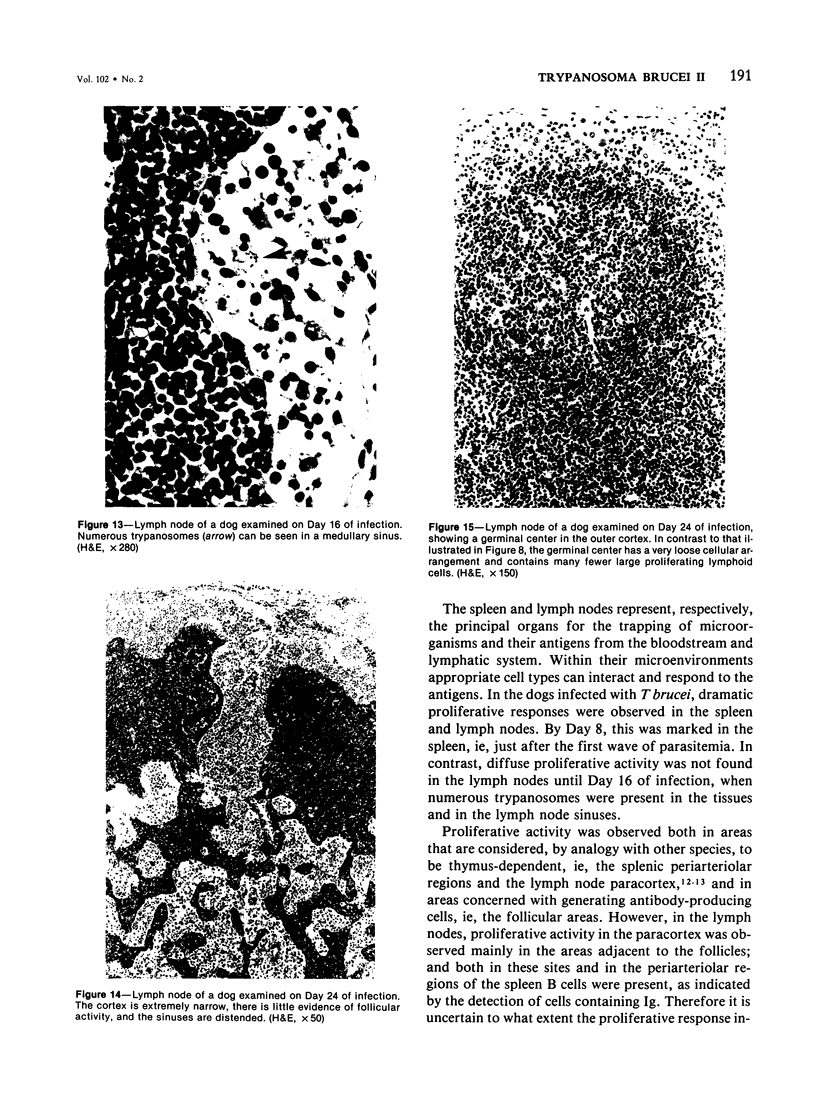
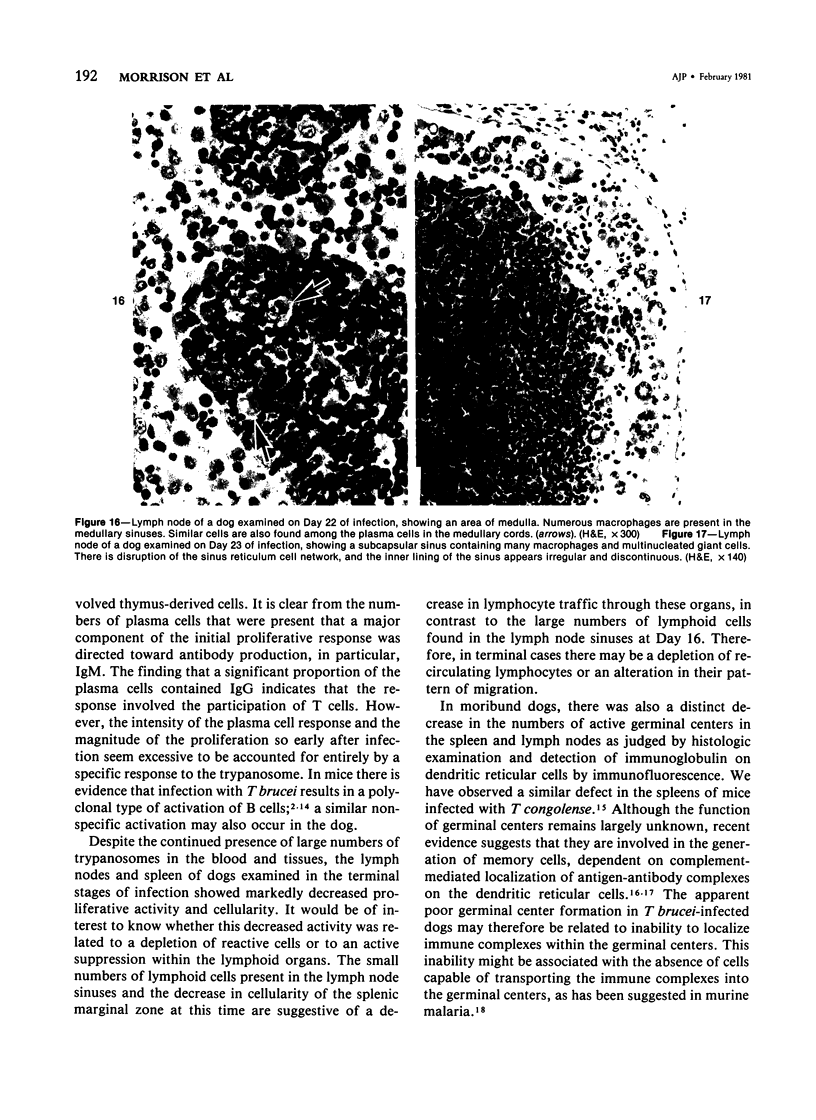
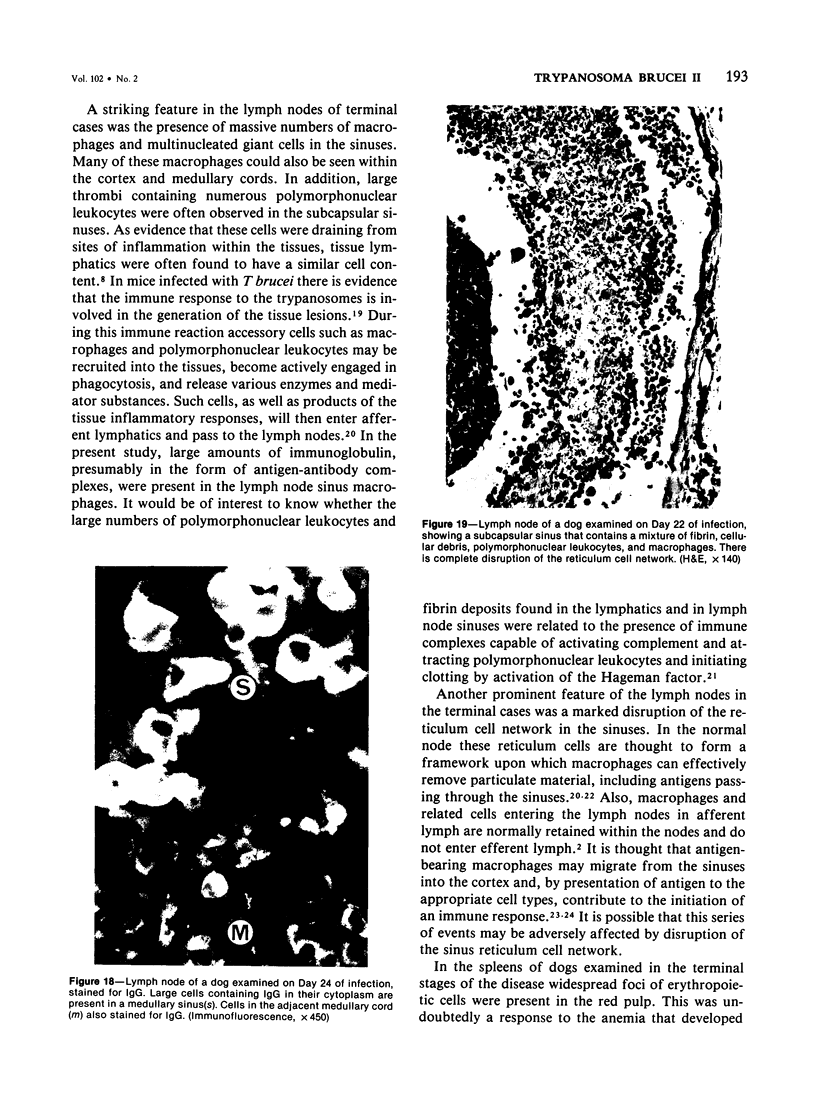
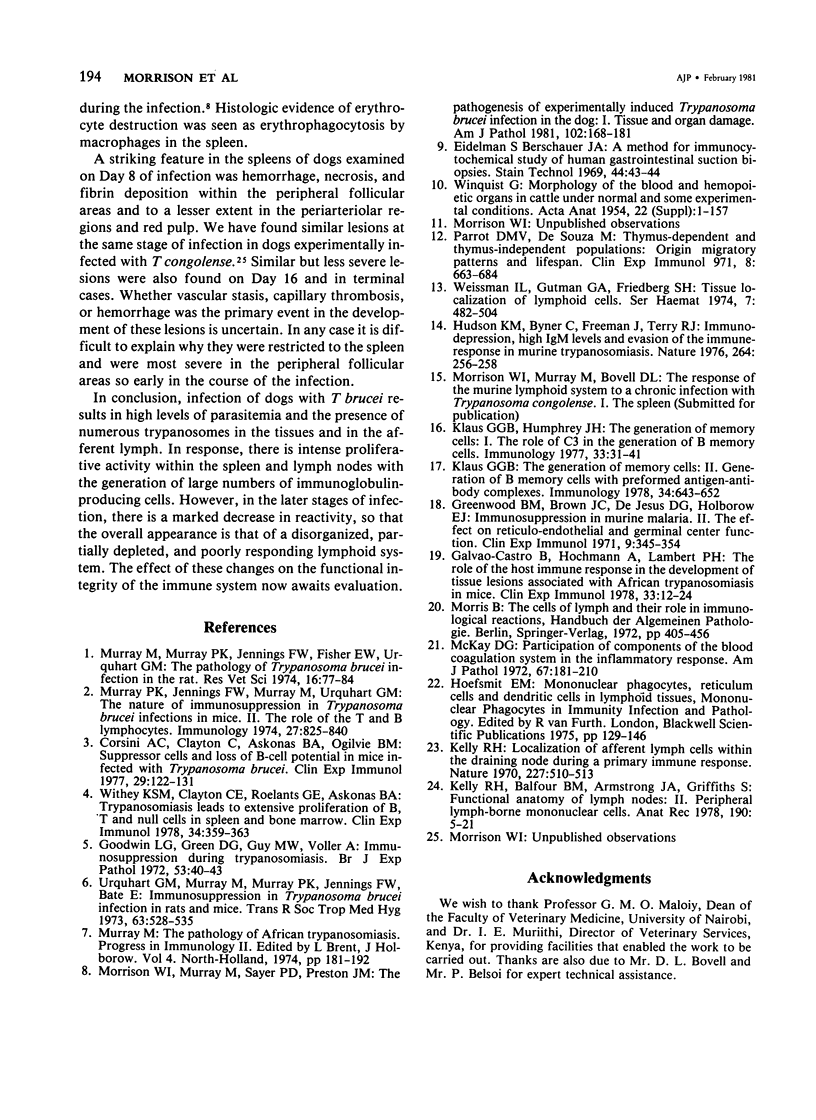
Images in this article
Selected References
These references are in PubMed. This may not be the complete list of references from this article.
- Corsini A. C., Clayton C., Askonas B. A., Ogilvie B. M. Suppressor cells and loss of B-cell potential in mice infected with Trypanosoma brucei. Clin Exp Immunol. 1977 Jul;29(1):122–131. [PMC free article] [PubMed] [Google Scholar]
- Eidelman S., Berschauer J. A. A method for immunocytochemical study of human gastrointestinal suction biopsies. Stain Technol. 1969 Jan;44(1):43–44. [PubMed] [Google Scholar]
- Galvao-Castro B., Hochmann A., Lambert P. H. The role of the host immune response in the development of tissue lesions associated with African trypanosomiasis in mice. Clin Exp Immunol. 1978 Jul;33(1):12–24. [PMC free article] [PubMed] [Google Scholar]
- Goodwin L. G., Green D. G., Guy M. W., Voller A. Immunosuppression during trypanosomiasis. Br J Exp Pathol. 1972 Feb;53(1):40–43. [PMC free article] [PubMed] [Google Scholar]
- Greenwood B. M., Brown J. C., De Jesus D. G., Holborow E. J. Immunosuppression in murine malaria. II. The effect on reticulo-endothelial and germinal centre function. Clin Exp Immunol. 1971 Sep;9(3):345–354. [PMC free article] [PubMed] [Google Scholar]
- Hudson K. M., Byner C., Freeman J., Terry R. J. Immunodepression, high IgM levels and evasion of the immune response in murine trypanosomiasis. Nature. 1976 Nov 18;264(5583):256–258. doi: 10.1038/264256a0. [DOI] [PubMed] [Google Scholar]
- Kelly R. H., Balfour B. M., Armstrong J. A., Griffiths S. Functional anatomy of lymph nodes. II. Peripheral lymph-borne mononuclear cells. Anat Rec. 1978 Jan;190(1):5–21. doi: 10.1002/ar.1091900103. [DOI] [PubMed] [Google Scholar]
- Kelly R. H. Localization of afferent lymph cells within the draining node during a primary immune response. Nature. 1970 Aug 1;227(5257):510–513. doi: 10.1038/227510a0. [DOI] [PubMed] [Google Scholar]
- Klaus G. G., Humphrey J. H. The generation of memory cells. I. The role of C3 in the generation of B memory cells. Immunology. 1977 Jul;33(1):31–40. [PMC free article] [PubMed] [Google Scholar]
- Klaus G. G. The generation of memory cells. II. Generation of B memory cells with preformed antigen-antibody complexes. Immunology. 1978 Apr;34(4):643–652. [PMC free article] [PubMed] [Google Scholar]
- Mayor-Withey K. S., Clayton C. E., Roelants G. E., Askonas B. A. Trypanosomiasis leads to extensive proliferation of B, T and null cells in spleen and bone marrow. Clin Exp Immunol. 1978 Dec;34(3):359–363. [PMC free article] [PubMed] [Google Scholar]
- McKay D. G. Participation of components of the blood coagulation system in the inflammatory response. Am J Pathol. 1972 Apr;67(1):181–210. [PMC free article] [PubMed] [Google Scholar]
- Morrison W. I., Murray M., Sayer P. D., Preston J. M. The pathogenesis of experimentally induced Trypanosoma brucei infection in the dog. I. Tissue and organ damage. Am J Pathol. 1981 Feb;102(2):168–181. [PMC free article] [PubMed] [Google Scholar]
- Murray M., Murray P. K., Jennings F. W., Fisher E. W., Urquhart G. M. The pathology of Trypanosoma brucei infection in the rat. Res Vet Sci. 1974 Jan;16(1):77–84. [PubMed] [Google Scholar]
- Murray P. K., Jennings F. W., Murray M., Urquhart G. M. The nature of immunosuppression in Trypanosoma brucei infections in mice. II. The role of the T and B lymphocytes. Immunology. 1974 Nov;27(5):825–840. [PMC free article] [PubMed] [Google Scholar]
- Urquhart G. M., Murray M., Murray P. K., Jennings F. W., Bate E. Immunosuppression in Trypanosoma brucei infections in rats and mice. Trans R Soc Trop Med Hyg. 1973;67(4):528–535. doi: 10.1016/0035-9203(73)90083-7. [DOI] [PubMed] [Google Scholar]
- Weissman I. L., Gutman G. A., Friedberg S. H. Tissue localization of lymphoid cells. Ser Haematol. 1974;7(4):482–504. [PubMed] [Google Scholar]



